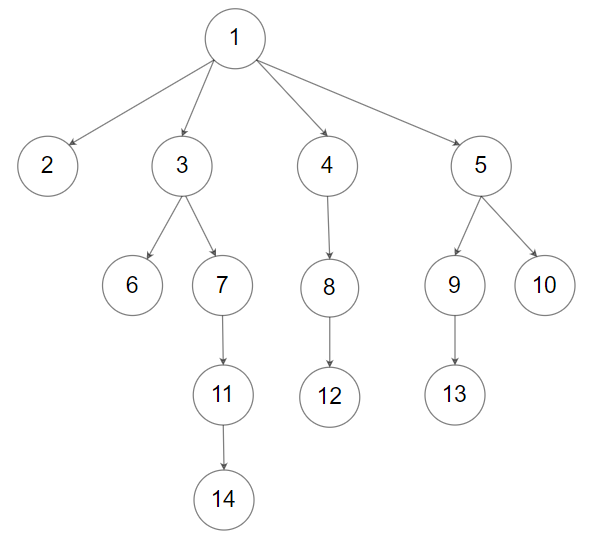LeetCode 589. N-ary Tree Preorder Traversal
作者:互联网
原题链接在这里:https://leetcode.com/problems/n-ary-tree-preorder-traversal/
题目:
Given the root of an n-ary tree, return the preorder traversal of its nodes' values.
Nary-Tree input serialization is represented in their level order traversal. Each group of children is separated by the null value (See examples)
Example 1:

Input: root = [1,null,3,2,4,null,5,6] Output: [1,3,5,6,2,4]
Example 2:

Input: root = [1,null,2,3,4,5,null,null,6,7,null,8,null,9,10,null,null,11,null,12,null,13,null,null,14] Output: [1,2,3,6,7,11,14,4,8,12,5,9,13,10]
Constraints:
- The number of nodes in the tree is in the range
[0, 104]. 0 <= Node.val <= 104- The height of the n-ary tree is less than or equal to
1000.
Follow up: Recursive solution is trivial, could you do it iteratively?
题解:
Could use top down recursion.
Time Complexity: O(n). n is the number of nodes in the tree.
Space: O(logn). regardless res. stack space.
AC Java:
1 /*
2 // Definition for a Node.
3 class Node {
4 public int val;
5 public List<Node> children;
6
7 public Node() {}
8
9 public Node(int _val) {
10 val = _val;
11 }
12
13 public Node(int _val, List<Node> _children) {
14 val = _val;
15 children = _children;
16 }
17 };
18 */
19
20 class Solution {
21 public List<Integer> preorder(Node root) {
22 List<Integer> res = new ArrayList<>();
23 if(root == null){
24 return res;
25 }
26
27 dfs(root, res);
28 return res;
29 }
30
31 private void dfs(Node root, List<Integer> res){
32 if(root == null){
33 return;
34 }
35
36 res.add(root.val);
37 for(Node next : root.children){
38 dfs(next, res);
39 }
40 }
41 }
Could also do it iteratively. It is the method 2 in Binary Tree Preorder Traversal.
Time Complexity: O(n).
Space: O(logn). stack space.
AC Java:
1 /*
2 // Definition for a Node.
3 class Node {
4 public int val;
5 public List<Node> children;
6
7 public Node() {}
8
9 public Node(int _val) {
10 val = _val;
11 }
12
13 public Node(int _val, List<Node> _children) {
14 val = _val;
15 children = _children;
16 }
17 };
18 */
19
20 class Solution {
21 public List<Integer> preorder(Node root) {
22 List<Integer> res = new ArrayList<>();
23 if(root == null){
24 return res;
25 }
26
27 Stack<Node> stk = new Stack<>();
28 stk.push(root);
29 while(!stk.isEmpty()){
30 Node cur = stk.pop();
31 res.add(cur.val);
32 for(int i = cur.children.size() - 1; i >= 0; i--){
33 if(cur.children.get(i) != null){
34 stk.push(cur.children.get(i));
35 }
36 }
37 }
38
39 return res;
40 }
41 }
标签:Node,Preorder,val,ary,Tree,res,null,root,children 来源: https://www.cnblogs.com/Dylan-Java-NYC/p/16414933.html